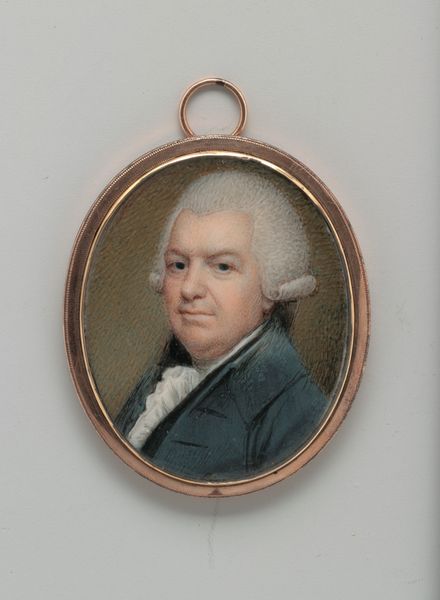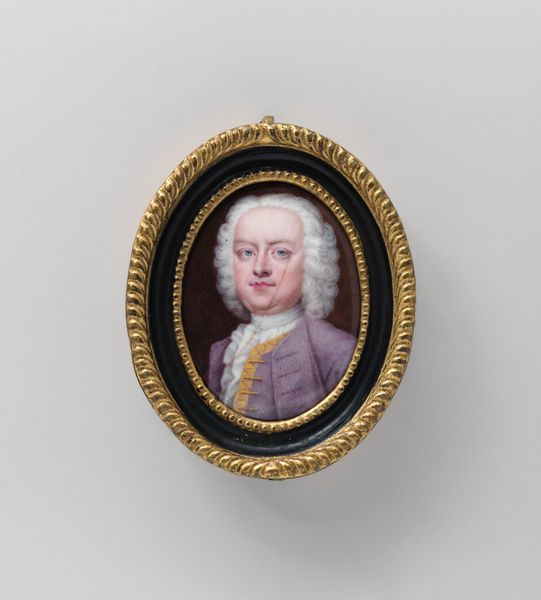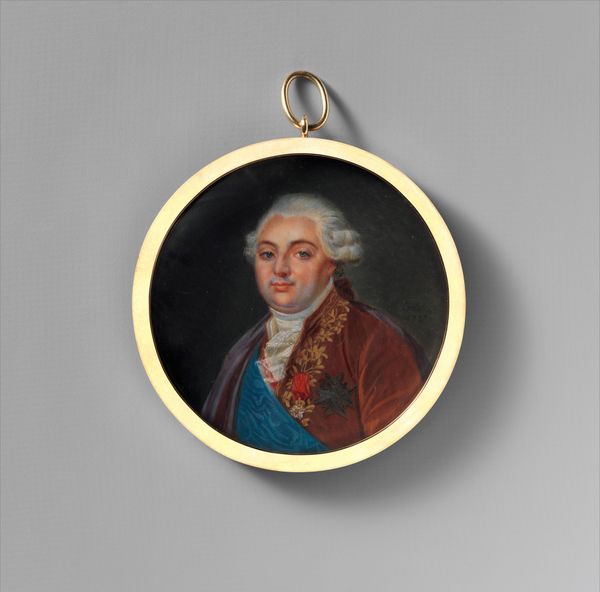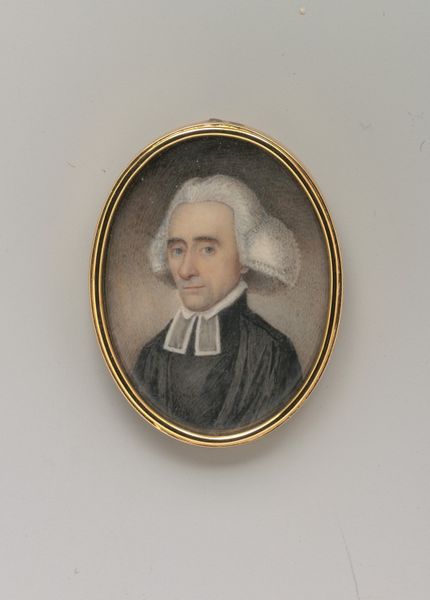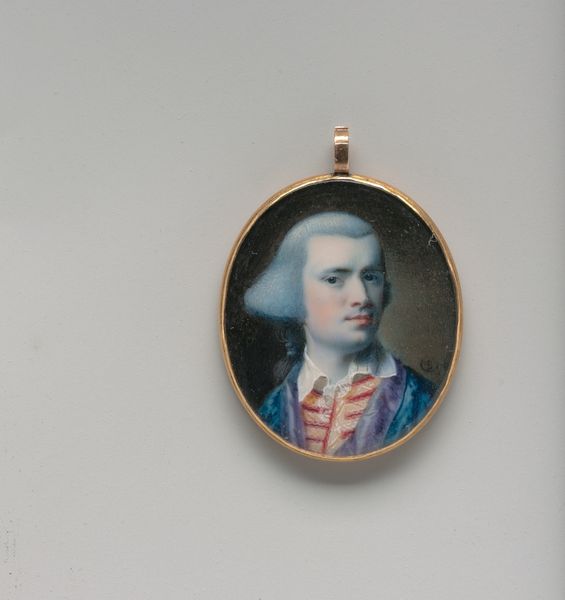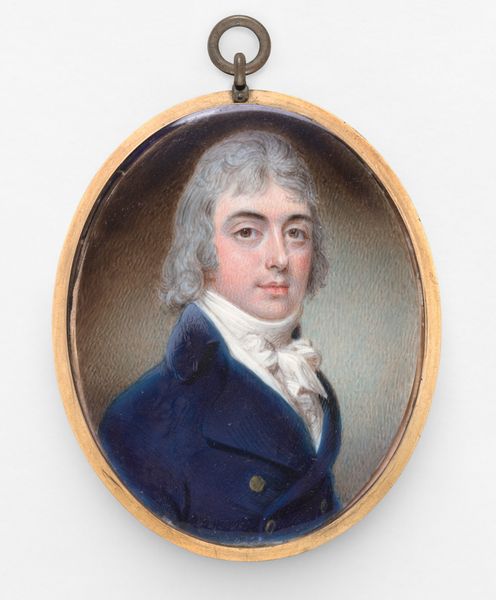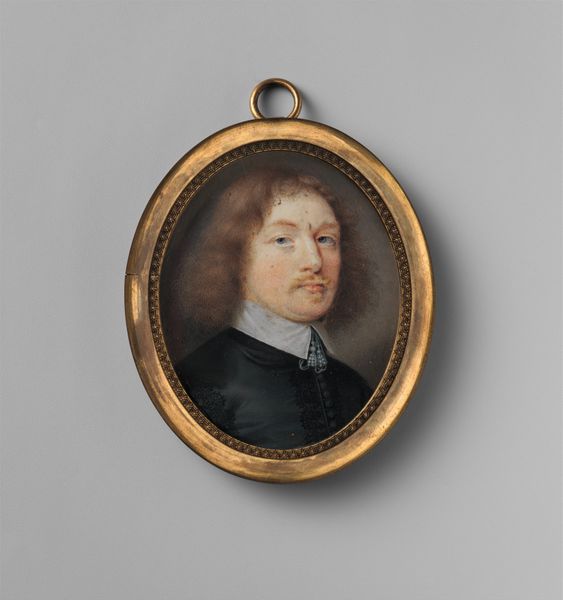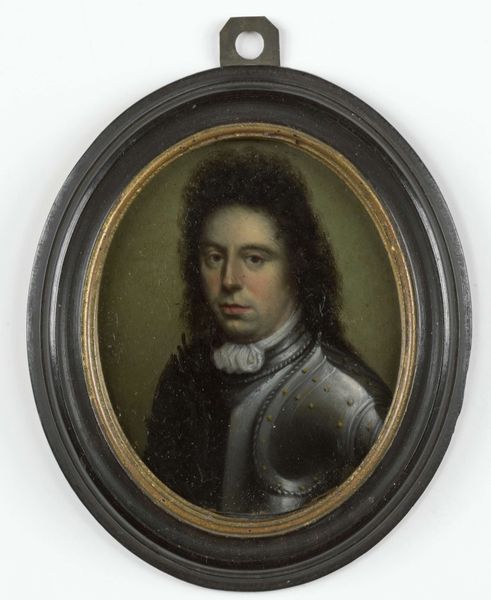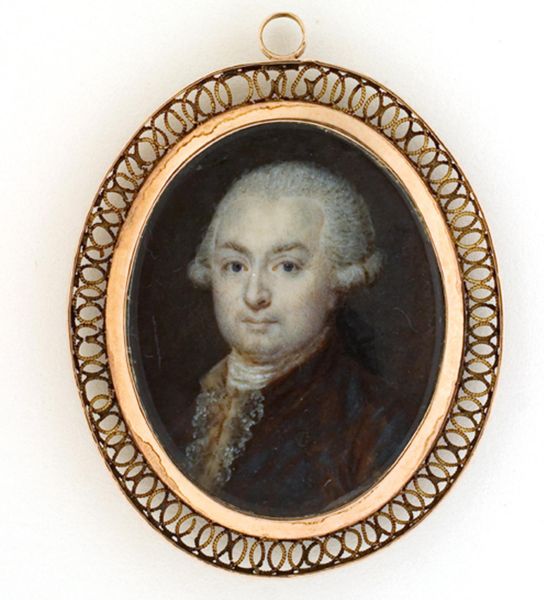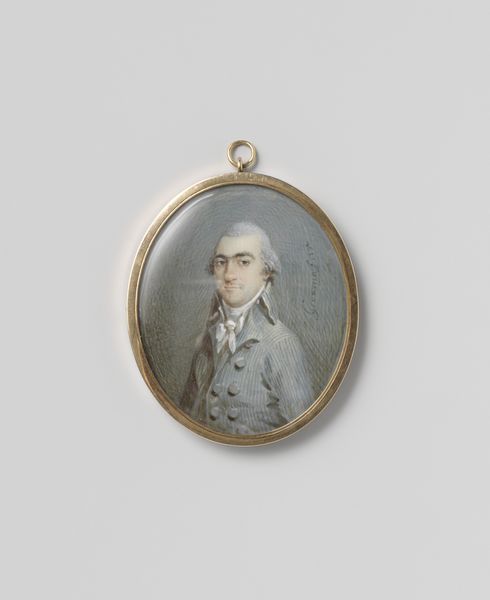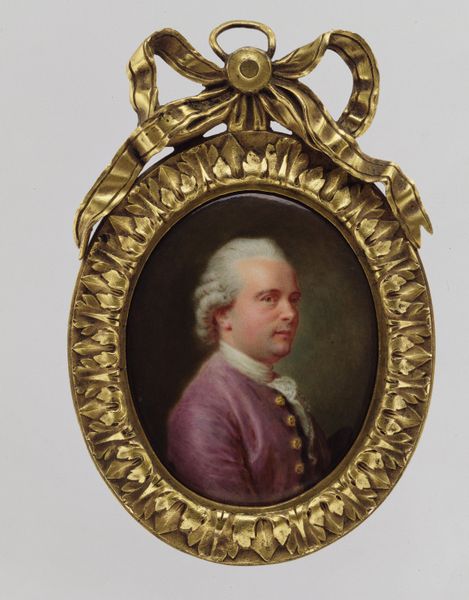
Dimensions: height 4 cm, width 3.5 cm, height 5.2 cm, width 3.6 cm, depth 0.4 cm
Copyright: Rijks Museum: Open Domain
Curator: I find it so charming, the almost palpable restraint and intimacy. Editor: Indeed. We're looking at Johann Friedrich Hurter's "Portret van Cornelis Ploos van Amstel" from 1772. An oil-on-panel miniature of a well-to-do gentleman. Curator: It's fascinating how such a tiny format—that circular frame, the almost gem-like surface—can convey such a powerful sense of character. Look at the tonality, a symphony of soft grays, blacks, and fleshy pinks. His gaze follows you, doesn't it? Editor: The Rococo styling is fairly evident: the ornamental frame topped with a ribbon motif. But that placid and polite expression carries more weight when understanding Cornelis Ploos van Amstel's actual historical relevance. He was a wealthy art collector and printmaker dedicated to making art accessible through affordable reproductions. Curator: So his social standing clearly influenced the style then, didn't it? Though, observe the composition. Hurter positions the sitter off-center, yet maintains a strict axial symmetry to maintain classical values. Editor: Yes, miniature portraits like this were luxury goods in high demand at that moment in the 18th century. The growth of a powerful middle class created an appetite for art, and that market fostered these trends. Ploos van Amstel democratized art production and collection by experimenting with printing techniques, but the refined character here fits in with that elite frame of portraiture during that era. Curator: Quite. And in formal terms, the smooth, porcelain-like finish gives him an almost unreal quality. There is that academic sensibility here, with idealised smoothness of skin but also, more candidly, there is an earnest gaze of almost naive trust that gives a true semblance of life. Editor: These objects had such potent cultural meaning. Commissioned as personal tokens of kinship and affection, this image performs more than mere likeness, reflecting his prominent role within the artistic community and serving a function beyond just being pleasing to look at. Curator: I find that appreciation crucial as it gives depth to understanding this painting as a sum of visual qualities. A painting that's seemingly intimate reveals, through history, the power of that intimacy as a symbol of larger historical and cultural importance. Editor: Exactly, by viewing Ploos van Amstel’s historical role we can contextualize the social functions miniatures such as this played in 18th-century society.
Comments
No comments
Be the first to comment and join the conversation on the ultimate creative platform.
